The activity tracker revolution
Activity trackers such as the ubiquitous Fitbit, Jawbone
and the Garmin Vivofit
are extremely popular these days. You can frequently spot them on colleagues, friends and customers. Their popularity raises a question: Does the collected data add value to your personal life? As a data hungry endurance athlete who relies on various technologies such as heart rate monitors, accelerometers & powermeters to improve my training I could not resist finding the answer. For the past three months I have worn a Garmin Vivofit
to collect and analyze data. Here are my experiences and a simple process for getting value out of your activity tracker.
The Data
What do activity trackers actually do? The devices count the number of steps that you take each day (they also estimate the distance you have covered). In addition, they also track data about your sleep. The Garmin Vivofit and the Polar Loop
also allow you to measure your heart rate and the associated calories burned during workouts. Pretty basic stuff really, nothing too fancy. Once the data has been collected you can review it in an app. The reports are very easy to understand, but it’s easy to brush over them. As a matter of fact, many people I know don’t use the dashboards. Instead, they simply look at their total step number. I believe that you can do more. Last year I wrote a very popular post called “Data is only useful if you use it!“. The activity tracker is a prime example. Here is the process that I leverage.
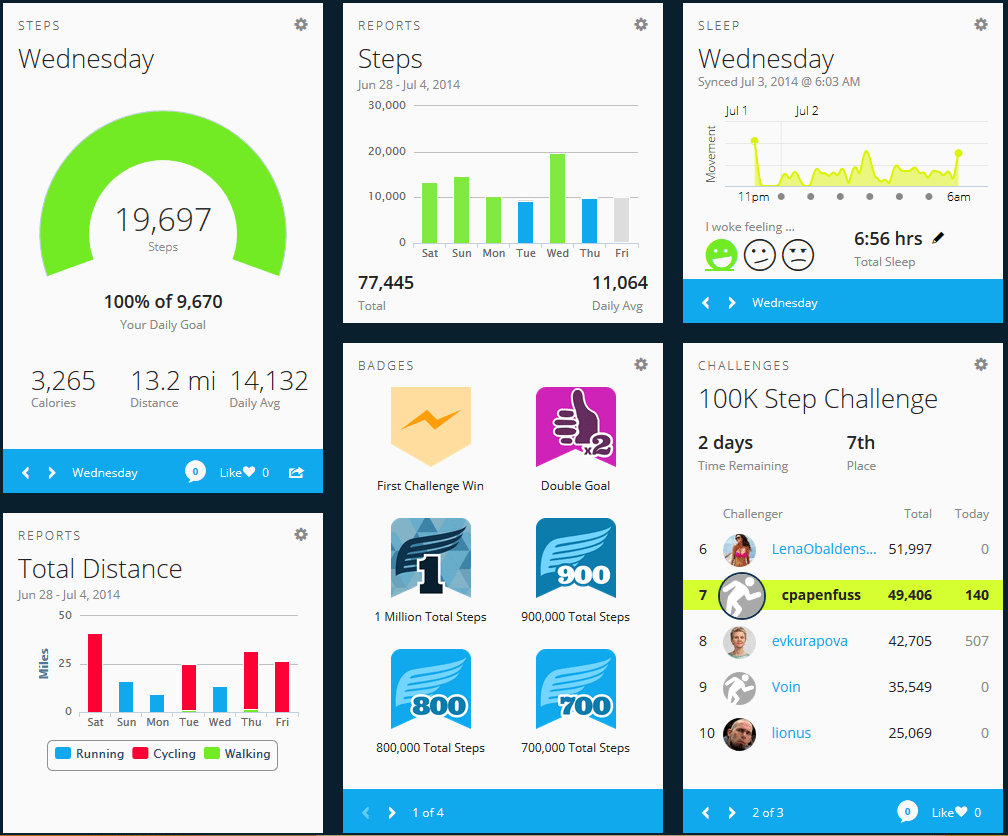
Five easy steps
1. Collect a bunch of data.
Start using your activity tracker for a few weeks. Make sure to wear it every single day. Wear it all the time. Synchronize frequently to avoid losing data. Also, make sure to familiarize yourself with the reports that are available for your device.
2. Analyze your lifestyle.
Once you have collected data, spend some time to look at the reports. I discovered a few surprises:
- Reaching the typical goal of 10k steps per days is not that hard for me. A typical morning run can easily get me above to 10000 steps before 8am.
- A typical workday is a bit of a shocker: Conference calls, admin work and email create long periods of complete inactivity except for the occasional walk to the coffee machine or the bathroom. As a matter of fact, the morning runs often account for 80% of the activity for the entire day.
- Weekends and vacation days usually show a high activity level. I typically move around a lot and it is spread evenly throughout the day.
- No wonder that conferences and trade-shows are so exhausting: the five most active days (as measured in steps) are linked to conferences. You constantly move, hardly ever sit around and often walk long distances.
Check out the charts below. Pretty interesting stuff.
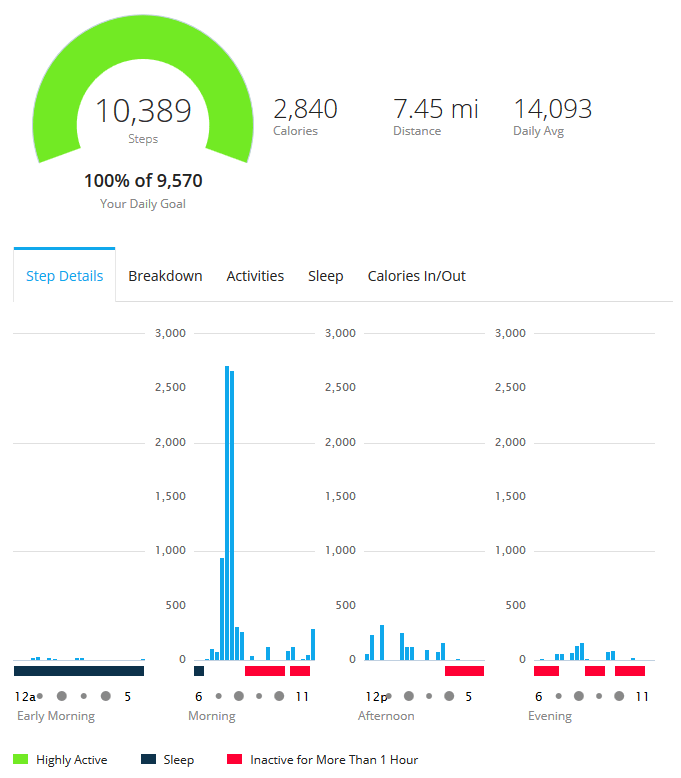
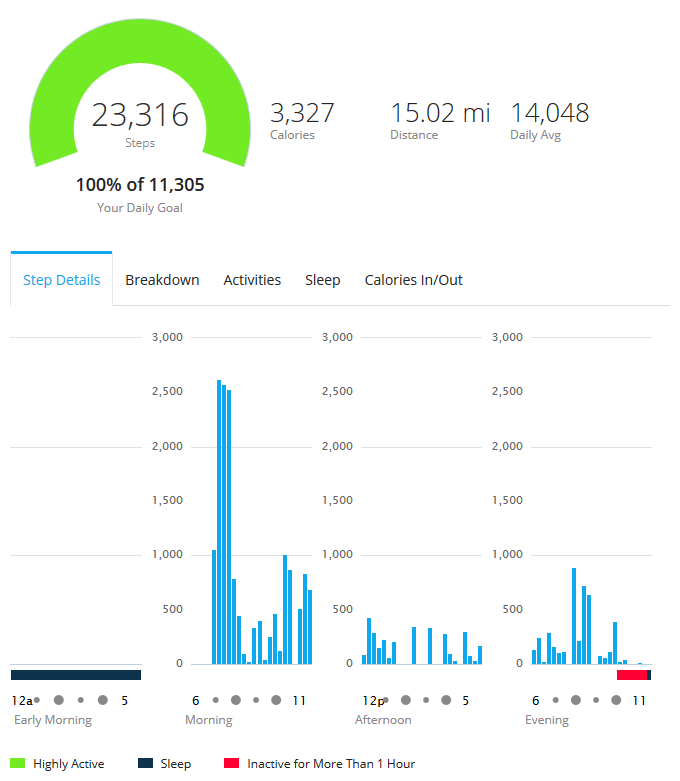
3. Identify weak spots.
Now that you have found some interesting patterns, identify your weak spots. I found three specific areas:
- Not enough sleep
- Too many periods of complete inactivity during working hours
- Hardly any activity on workdays when I don’t work out (steps below 5000)
It’s fairly easy to get this information out of the reports.
4. Make changes to your lifestyle
It’s time to make some changes. In general, scientists recommend to stay active throughout the day to keep your metabolism engaged. And some of the activity trackers can help you with that. My Garmin Vivofit, for example, features a red bar on top of the display which displays inactivity. To clear this bar you basically have to move and do something.
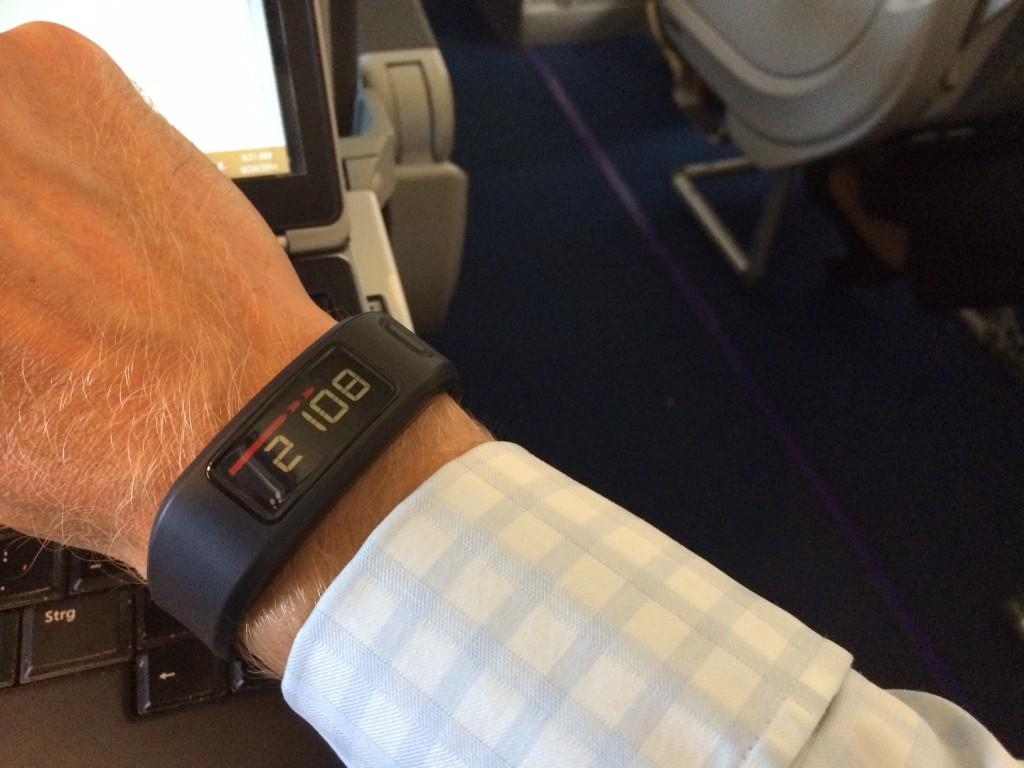
In general, here are some of the things that I have changed:
- Instead of taking mental breaks at my desk (surfing, reading the news, personal email), I now get up every 45-60 minutes and spend a few minutes doing an activity (walking, push-ups, stretching).
- 3-4 short walks on rest days. It’s good to get out!
- Focus on sleep
5. Use the activity tracker for daily motivation
Once you have some goals and objectives, you can also use the activity tracker to get motivated. First of all, there is the daily goal that all of these devices provide you with. Then some of them also have badges for certain achievements. It’d kind of fun to work on getting them. Last but not least, you can also participate in step challenges with friends and families.
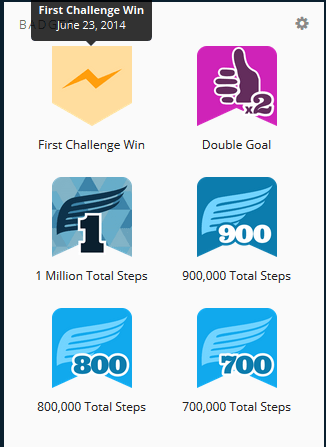
Summary
Activity trackers can definitely provide you with some interesting insights. However, you do have to make an effort to analyze the data. Simply looking at the total number of steps is probably a waste of money. To do that you can purchase a cheap step tracker. It’s the analysis where you get the bang for the buck. Will I continue wearing the Garmin Vivofit? I certainly will. I am currently in the process of assessing how activity levels between really hard workouts affect my recovery. What are your experiences?
